How Does the Porsche Panamera GTS (971) Differ from the Turbo?
公開日:2020.05.24
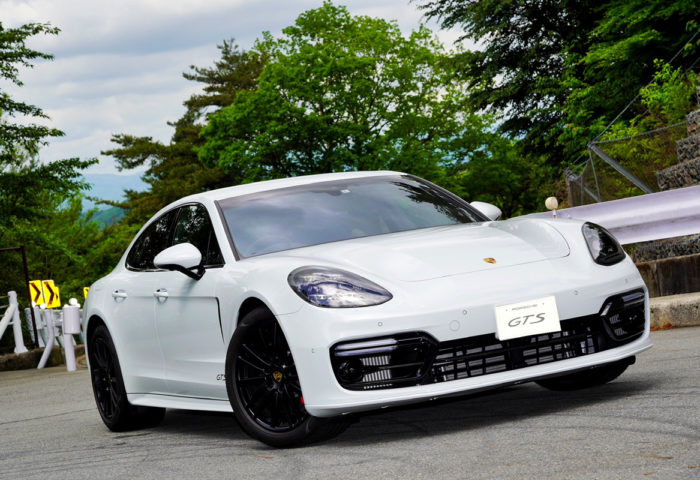
The other day, I wrote my impressions after test driving the Panamera GTS, and now I’d like to share my husband’s thoughts.
コンテンツ
The Meaning Behind the “GTS” Badge
I was personally very curious and fortunate to have the chance to test drive the 971 Panamera GTS. Since our family owns a Panamera Turbo, I’ll focus this report on comparing the two.
For Porsche, the GTS grade holds a special place. Tracing back its history, the original Porsche 904 GTS racing car was born in 1963. GTS stands for “Gran Turismo Sport,” symbolizing Porsche’s high-performance grade.
Regarding the Panamera GTS, the previous 970 model featured a 4.8L naturally aspirated V8 engine, producing an iconic exhaust note that remains beloved to this day. The new 971 GTS, however, uses the same V8 engine model but in a detuned version of the Turbo’s engine.
Engine specs are 460 PS at 5750-6000 rpm and 620 N⋅m at 1960-4500 rpm. Compared to the Turbo, the RPM ranges are the same, but horsepower is down by 90 PS and torque by about 150 N⋅m.
Being a GTS, it comes standard with a sports exhaust system, PASM suspension lowered by about 10mm, and a sports design package with piano black exterior trim. The interior can be optioned with the GTS Interior Package, featuring a sporty Alcantara-based design.
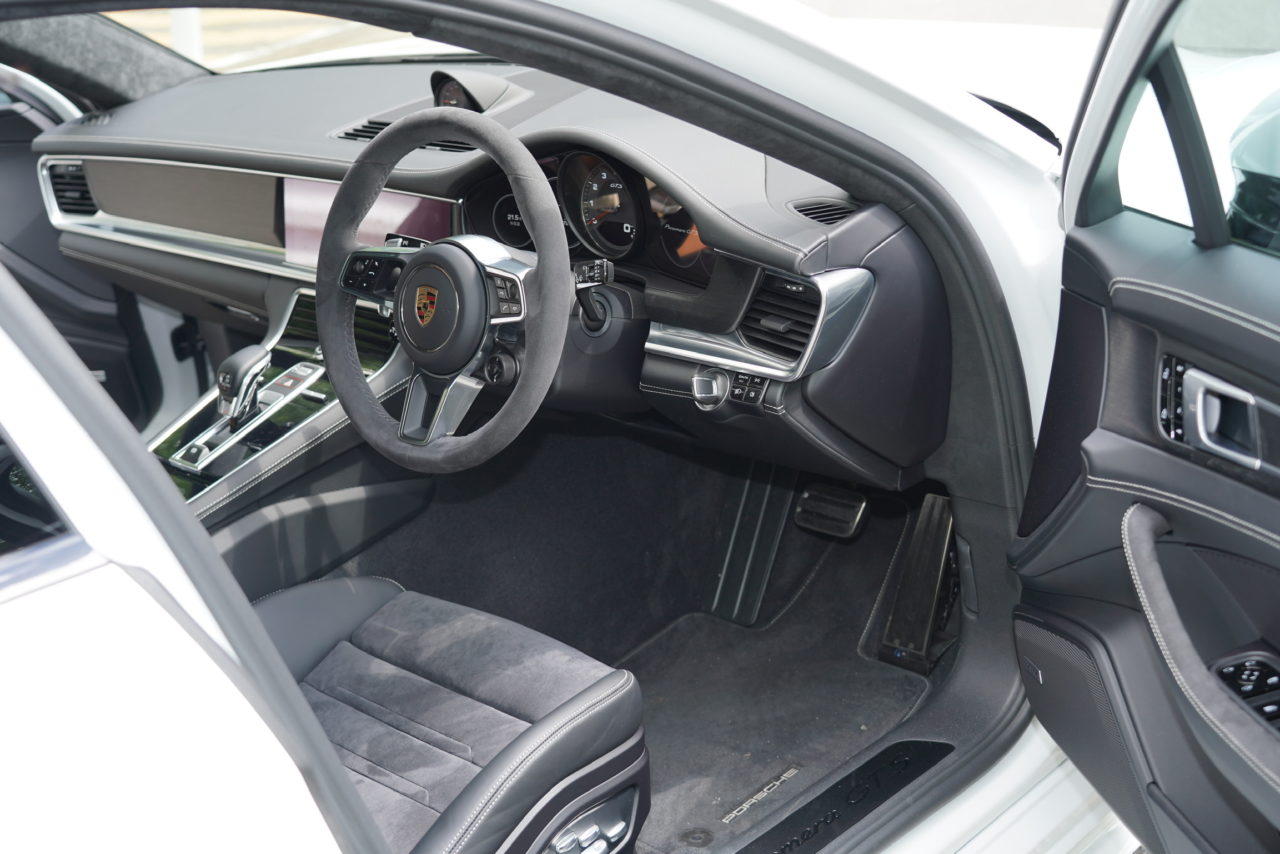
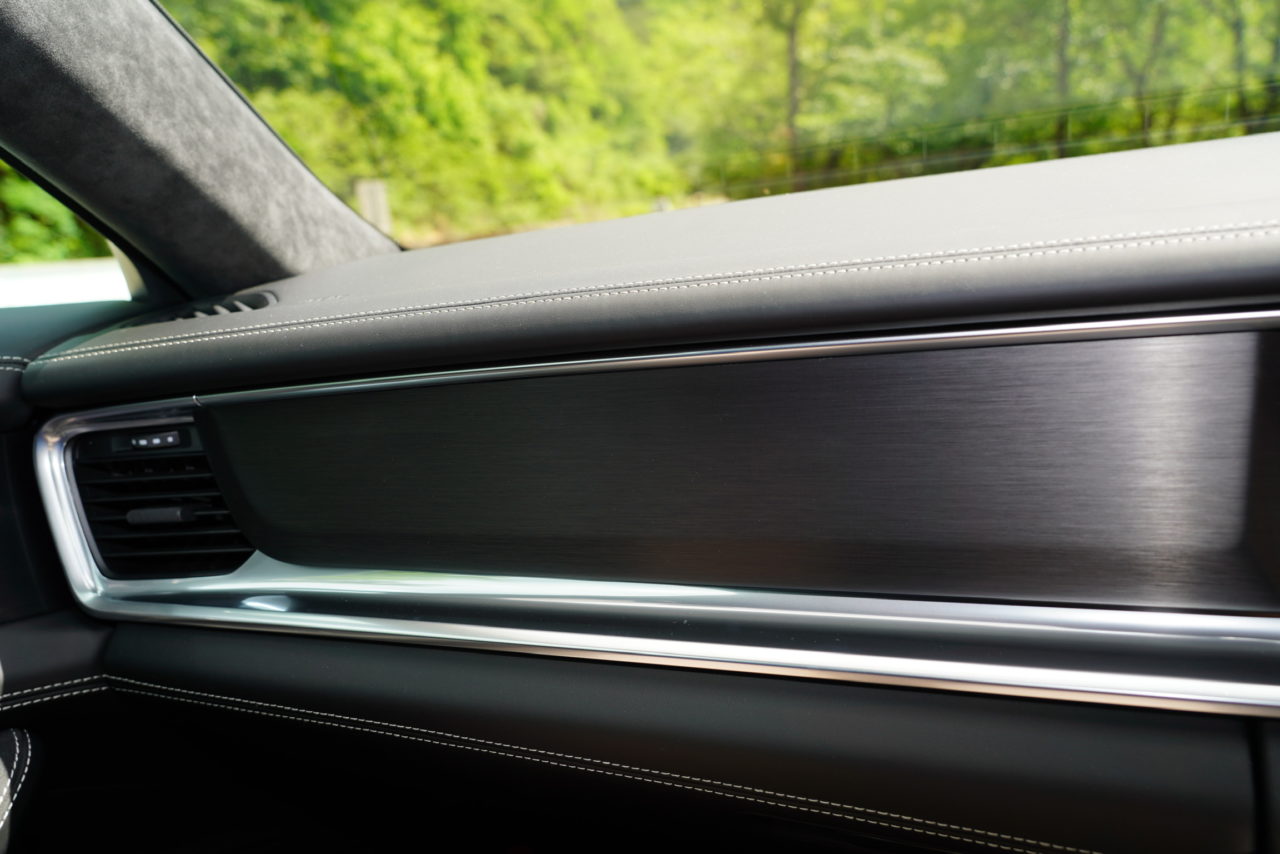
Comparing the Turbo and GTS
The engine start-up sound is almost identical to the Turbo’s. The GTS seems slightly quieter, but the tachometer needle jumping up at ignition is pure Porsche.
Driving around town, my first impression was that the GTS feels crisper and more agile than the Turbo. This may partly be due to the Alcantara steering wheel, which feels firmer to grip, but the suspension feels more solid—somewhere between the Turbo’s normal and sport modes.

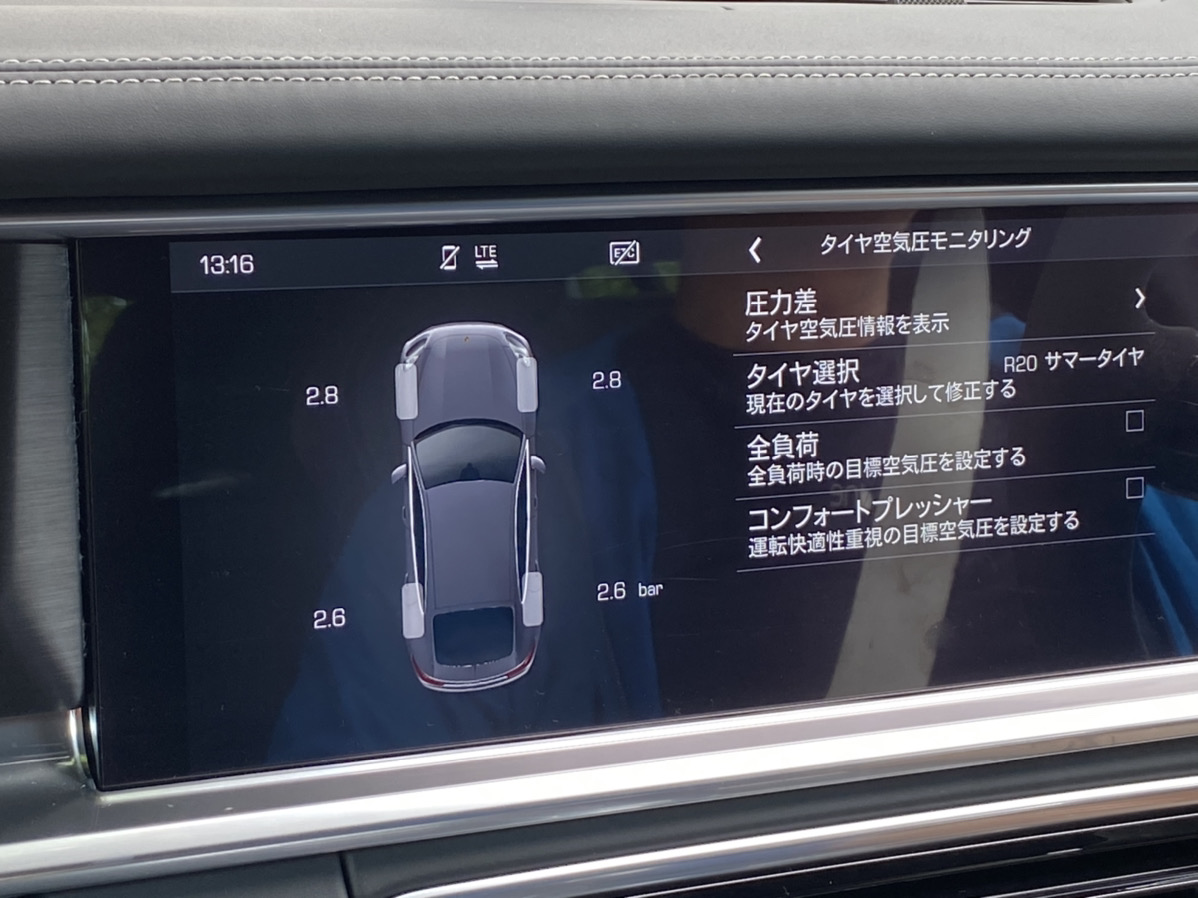
However, when it comes to ride comfort, I felt the GTS was better than the Turbo. The GTS absorbs road imperfections more smoothly, quickly soaking up bumps with a subtle, gliding motion.
The GTS comes with 20-inch standard wheels, one size smaller than our Turbo’s 21-inch wheels, but the 20-inch wheels perfectly complement the GTS suspension, making for a very comfortable ride. The recommended tire pressure for the 20-inch wheels is also lower than for the 21-inch, which likely contributes to the comfort. The suspension remains firm yet never sacrifices comfort, which left a strong impression.
In stop-and-go traffic, the difference between the Turbo and GTS becomes more apparent. The GTS engine revs more lightly and makes city driving with frequent stops much easier.
It’s not that the Turbo is hard to drive, but the accelerator feels a bit heavier. The Turbo delivers an overwhelming torque that quietly pushes you forward from low rpm, and with a bit of right foot pressure, it suddenly awakens and launches into furious acceleration.
In contrast, the GTS feels milder and gentler. Whether this is due to computer-controlled output or variable turbine sizing like the 992 Carrera and Carrera S is unclear, but it felt more like the latter. Despite being a turbo engine, it’s tuned to emphasize a naturally aspirated feel, which I really liked.
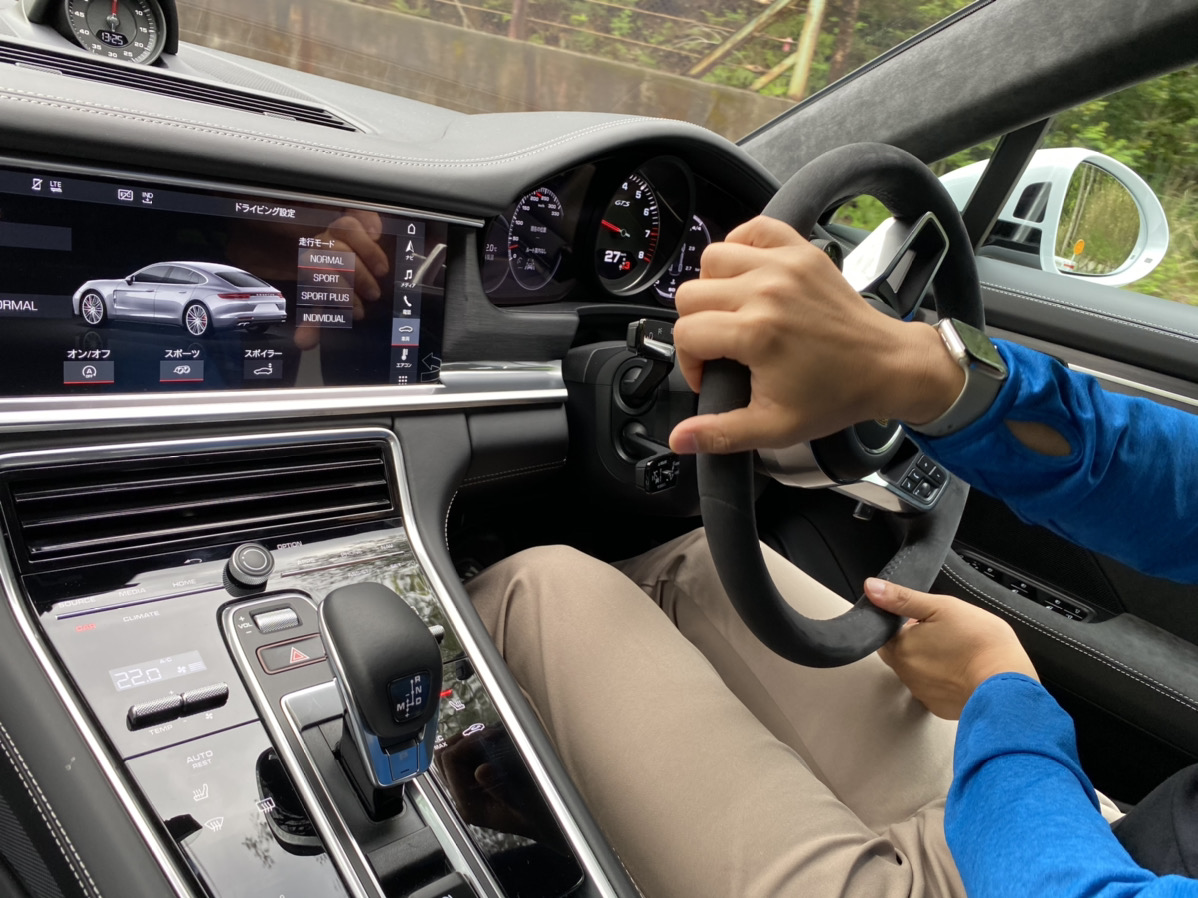
On the comfort front, the GTS’s “18-way electric adaptive sports seats” were excellent. Our Turbo’s seats are the standard “14-way electric seats with memory function,” but compared to those, the GTS seats offer noticeably better hold and thicker cushioning.
Our only complaint with the Turbo is the seat cushion, which feels thin and firm. In contrast, the GTS seats have well-padded cushions, reminiscent of those in the 911, Cayman, and Boxster, which I appreciated.
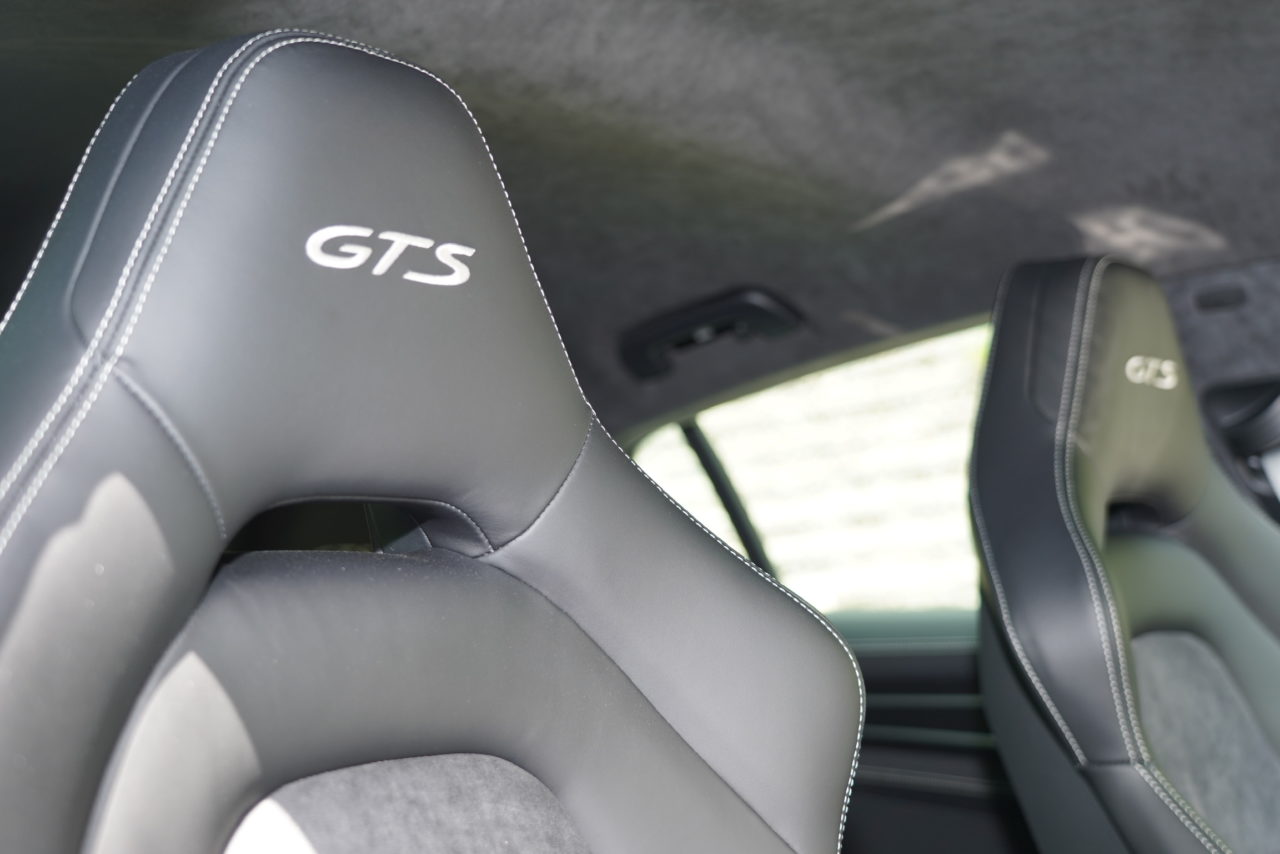
Regarding engine sound, the GTS is quieter than one might expect from the GTS lineage. Honestly, the Turbo is louder, especially with the sports exhaust off. Even with the sports exhaust on, the Turbo is noticeably louder, and the afterfire pops when lifting off the throttle in Sport Plus mode are more pronounced on the Turbo.
Our Turbo has about 28,000 km on it, so some muffler aging is a factor, but the sound profiles of the Turbo and GTS are actually the opposite of what you might imagine. If sound is a priority, the Turbo with the sports exhaust is the better choice.
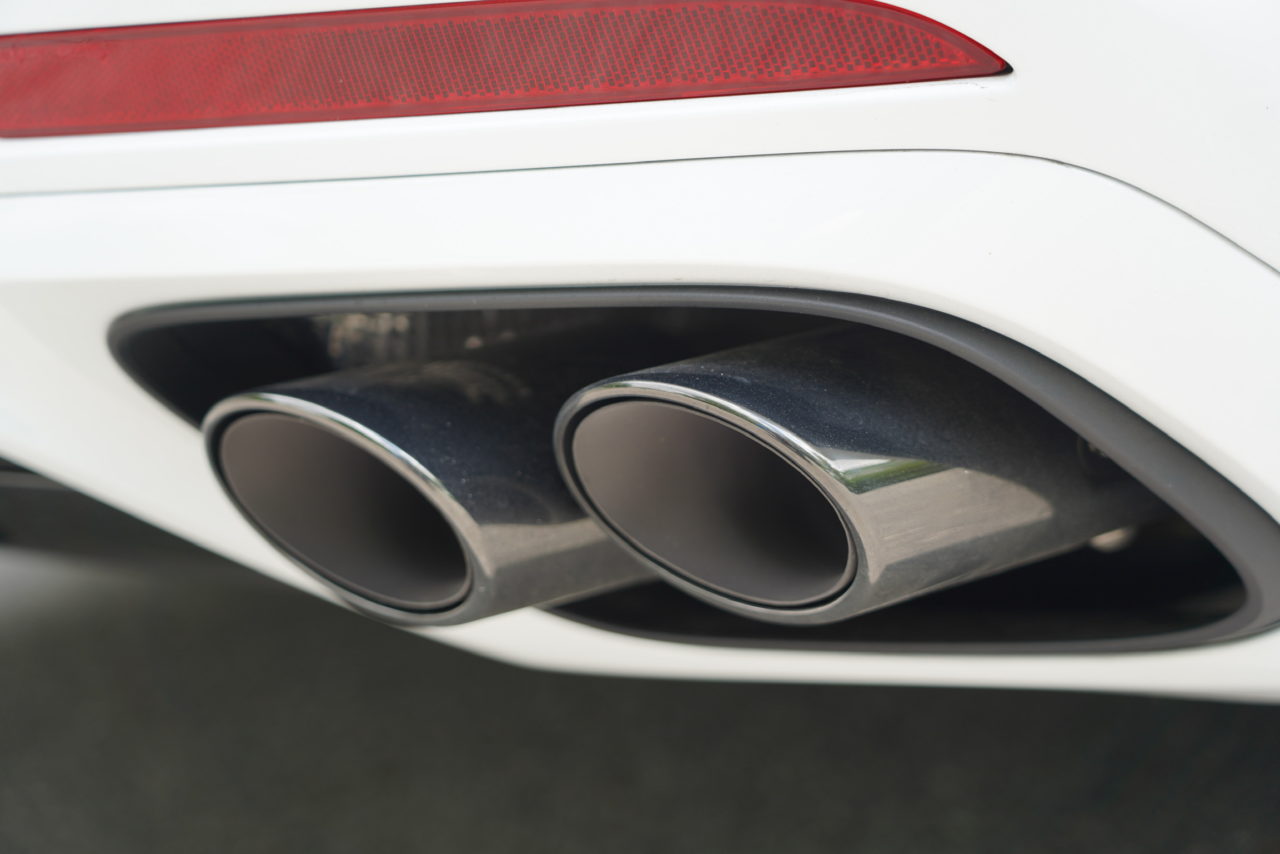
As for handling, it’s virtually identical to the Turbo, which is my conclusion. At least I couldn’t tell the difference. This GTS also features rear-axle steering under the same conditions. The rear-wheel steering makes it astonishingly agile in tight corners. The Panamera remains more than enjoyable on winding roads. If comparing to the V6 S or base models, the difference would be more noticeable, but since both the GTS and Turbo have the same V8 up front, this result is expected.
Acceleration and power feel correspond to the horsepower difference—550 PS vs. 460 PS, a 90 PS gap. That’s roughly the difference in acceleration you feel. Of course, the GTS is not slow by any means—it’s quite fast. It’s just that the Turbo’s acceleration is extremely quick. On the other hand, as mentioned earlier, the GTS offers better low-speed response and easier throttle control.
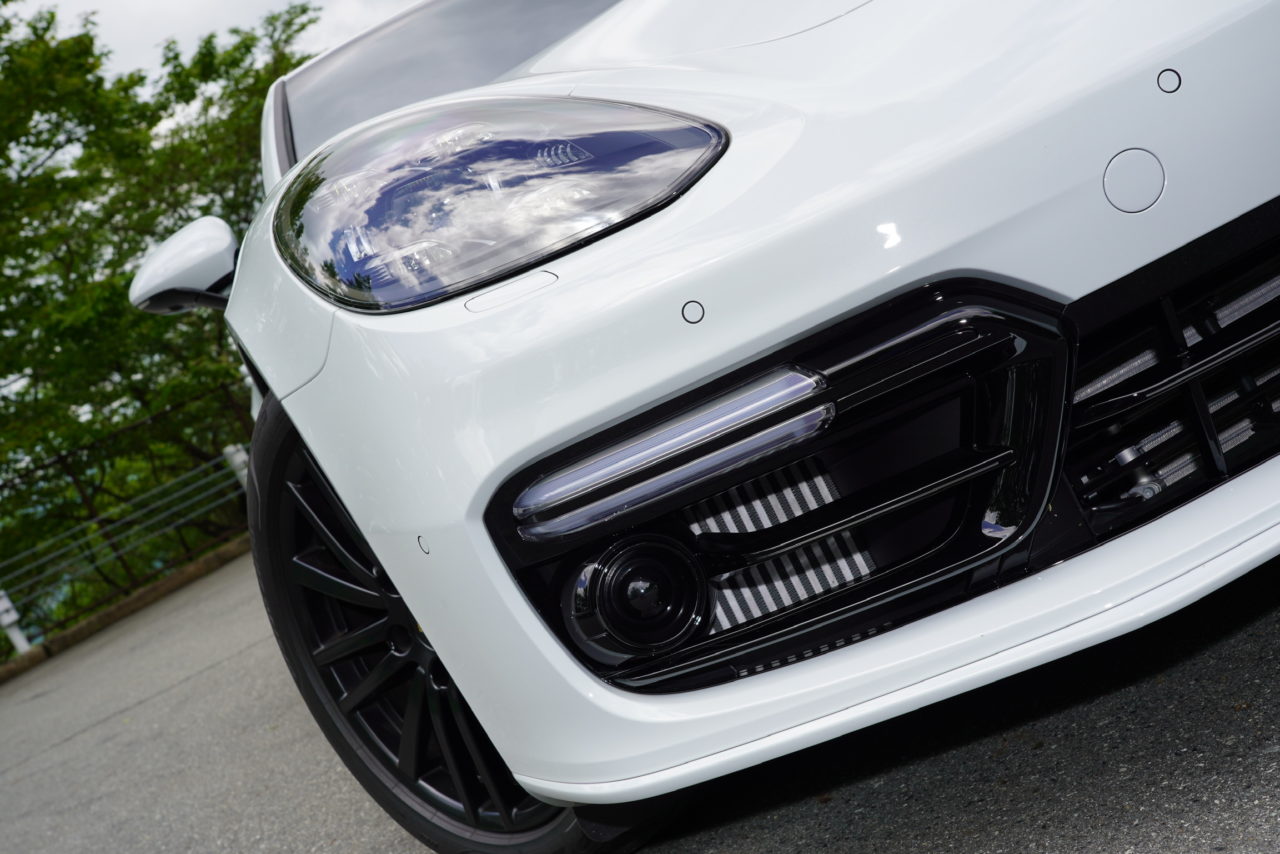
Regarding the PDK transmission, the Panamera’s shift speed isn’t the fastest, and while I hoped the GTS might improve on this, it didn’t differ much from the Turbo. The GTS might feel slightly more responsive, and the 1st-to-2nd gear shifts in town seem a bit smoother, possibly due to better engine-transmission matching.
Overall Impression of the Panamera GTS
After the test drive, I thought about who would be best suited to buy the GTS. First and foremost, it’s for those who prefer the unique exterior and interior styling of the GTS. If you like the slightly lowered ride height, the sports design package, and the Alcantara-rich GTS Interior Package, then the GTS is the clear choice.
Next, it’s for those who want a V8 engine rather than a V6, and prefer a deeper, bass-rich exhaust note. However, if volume is a concern, the Turbo with the sports exhaust is better. (Though the GTS is still quite loud.) Power-wise, the GTS is more than enough. In Japan’s driving environment, it won’t feel slow or underpowered.
Considering this, the GTS is ideal for those who don’t want to pay Turbo prices but prefer the V8 engine feel and the distinctive GTS design and atmosphere.
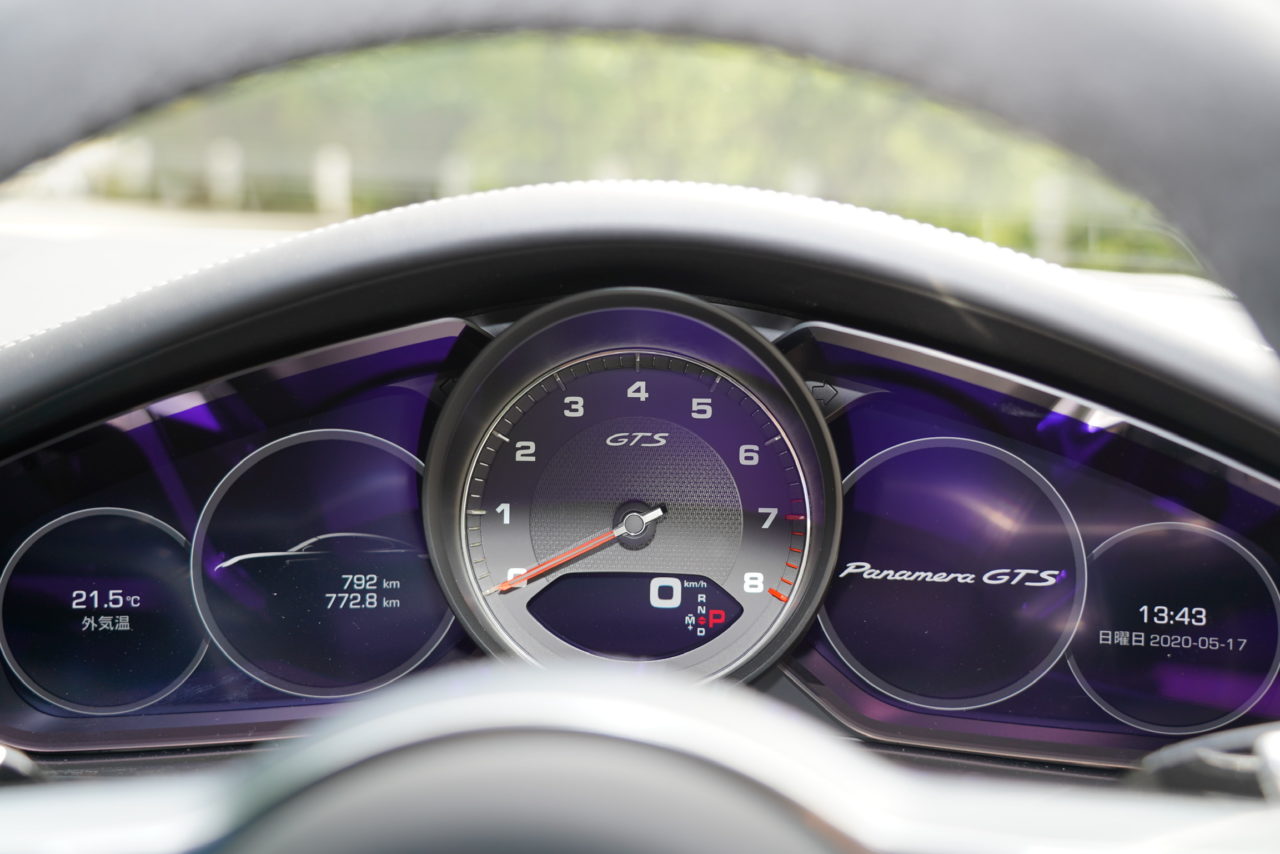
Final Thoughts on the Panamera GTS
From the perspective of a Turbo owner, the GTS is an excellent car, but I felt it’s somewhat of a middle ground within the Panamera lineup. If this GTS had a high-tuned V6 like the 4S instead of a V8, it might feel lighter up front and sportier. Considering my preference for driving enjoyment, I think I’d rather opt for a 4S with more options than the GTS.
Personal Ratings
| Handling: |  (4.5 / 5) (4.5 / 5) |
| Straight-line Stability: |  (5.0 / 5) (5.0 / 5) |
| Low-speed Comfort: |  (4.7 / 5) (4.7 / 5) |
| High-speed Comfort: |  (5.0 / 5) (5.0 / 5) |
| Engine Feel: |  (4.3 / 5) (4.3 / 5) |
| Engine Sound: |  (4.2 / 5) (4.2 / 5) |
| Brakes: |  (4.0 / 5) (4.0 / 5) |
| Transmission: |  (3.8 / 5) (3.8 / 5) |
| Average: |  (4.4 / 5) (4.4 / 5) |
このブログが気に入ったらフォローしてね!


Comment ( 0 )
Trackbacks are closed.
No comments yet.